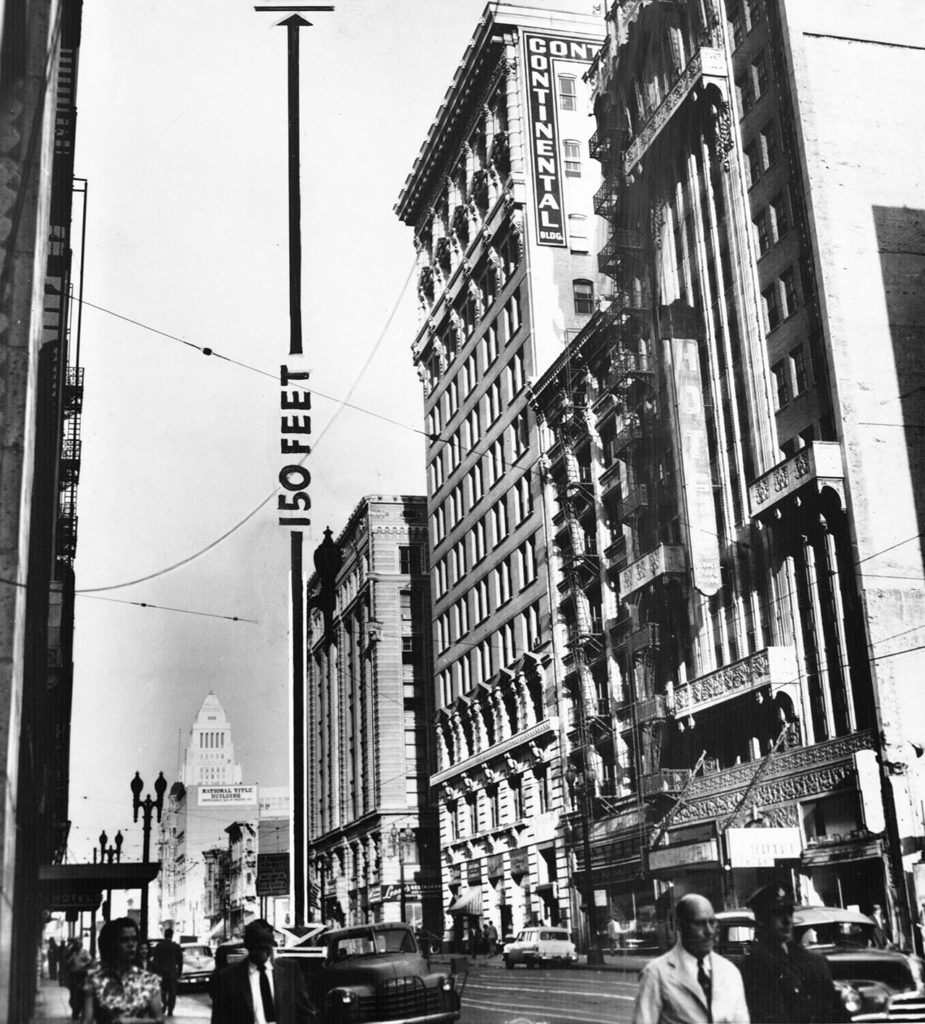
I once took a Los Angeles Conservancy architecture tour whose leader, having brought us atop Bunker Hill, gestured toward an old building over on Spring Street and told us a story from his former career as a city employee. One day he needed a ride home and a higher-up in his department offered it. Generous though that act might make him seem, this man’s job, as our tour guide described it, required the opposite of large-heartedness: he spent most days at the office finding reasons to reject as many of the building or rebuilding proposals that crossed his desk as possible, and spent the entire hour’s drive to Long Beach laying acerbically into the developer responsible for the latest pile of paperwork in his inbox: some guy who wants to do a residential conversion of some empty offices downtown, a dreamer so delusional that “he actually believes people are going to live on Spring Street!”
That developer, as anyone with an eye on the transformation of modern Los Angeles will have guessed, was Tom Gilmore, the gregarious New Yorker now widely credited with sparking the return of a large residential population, and the varied day-and-night activity such a population brings, to a largely forgotten downtown. That anecdote gets a reliable laugh in the midst of a boom that makes its starring city official look like a blinkered record label executive sending away the Beatles or investor passing on Facebook. But by the late 1990s when Gilmore launched into his mission in earnest, longtime Angelenos had grown accustomed to hearing rumors of a coming downtown revival at least once a decade, rumors that never seemed to produce much enticement to go there, let alone move there. Yet at some point in the 2000s, it became undeniable that this one had actually taken.
The Spring Street structure the Conservancy guide pointed out was the Continental Building, first known when it opened in 1904 as the Braly Block. “That’s L.A.’s first skyscraper,” says Tom Hansen, the young aspiring architect protagonist of Marc Webb’s “(500) Days of Summer,” gesturing toward the building from his own Bunker Hill perch beside his titular romantic interest. That movie, one of the first set amid the renewed (if occasionally exaggerated) street life of 21st-century downtown Los Angeles, prominently features the architecture of the central city, or at least its architecture of the late 19th and early 20th century. Though he goes unnamed in the dialogue, no single architect had as much responsibility for the look and feel of Los Angeles’ built environment at that time than John Parkinson, designer of the Braly Block.
Read the whole thing at KCET.